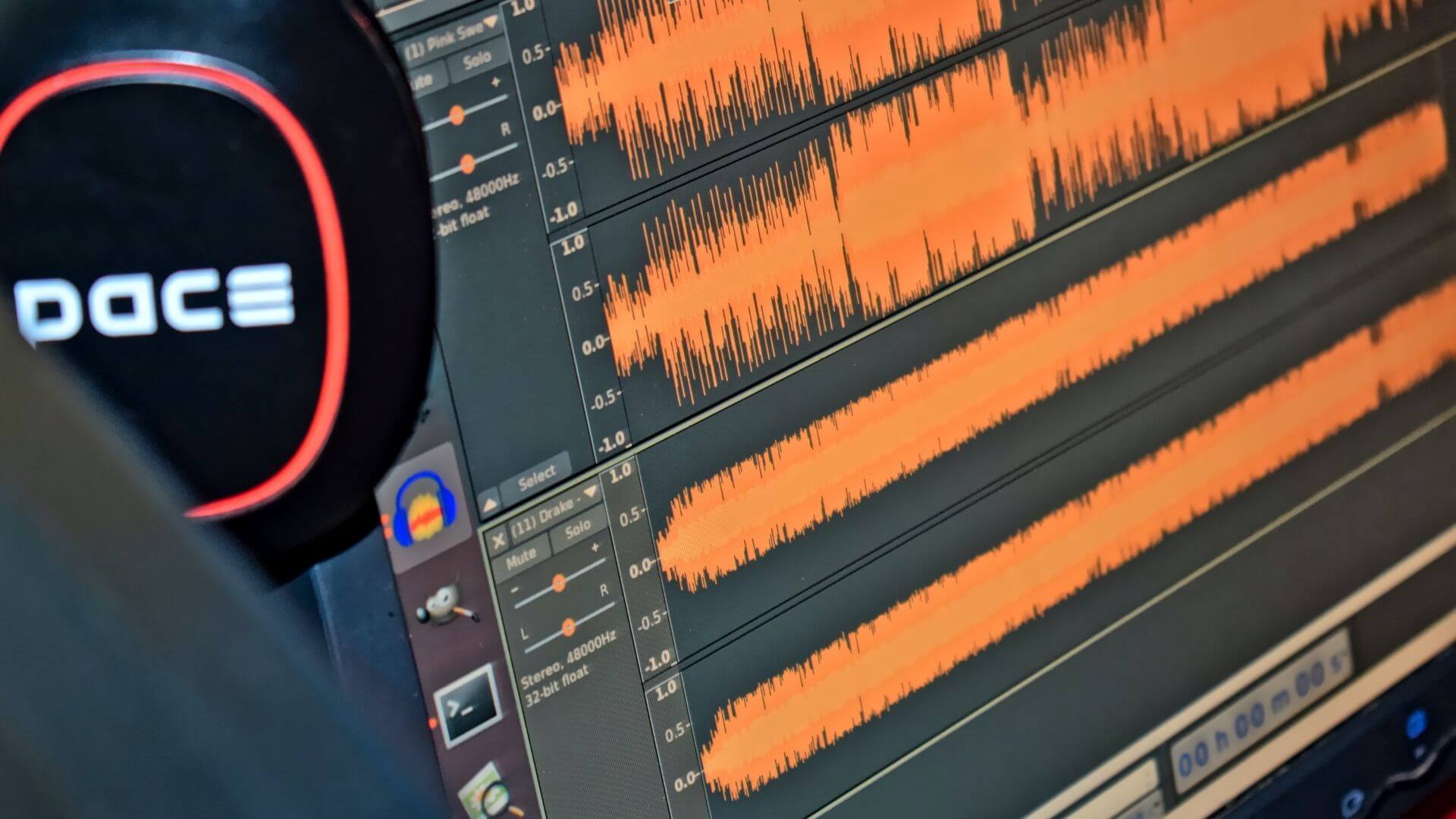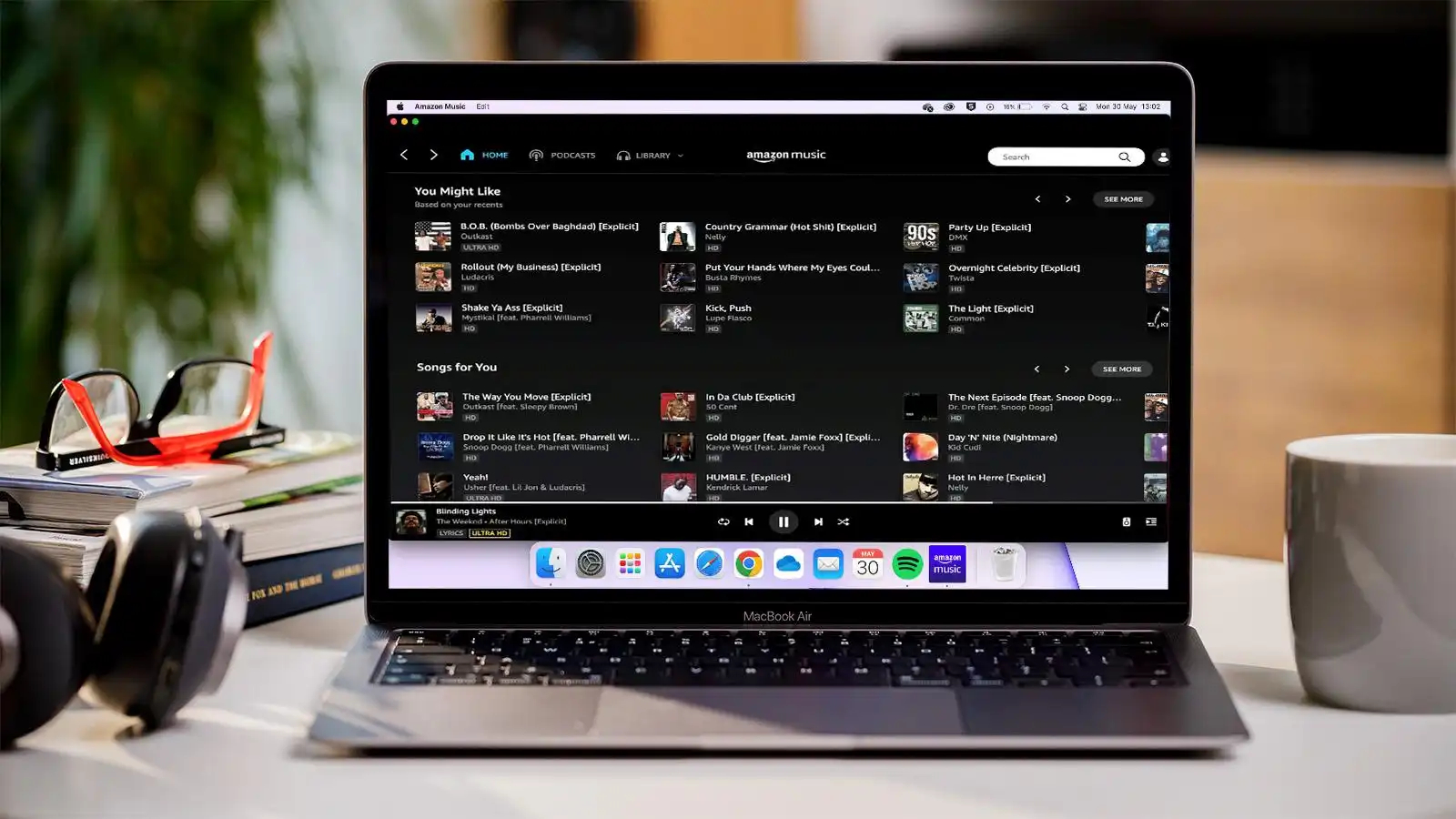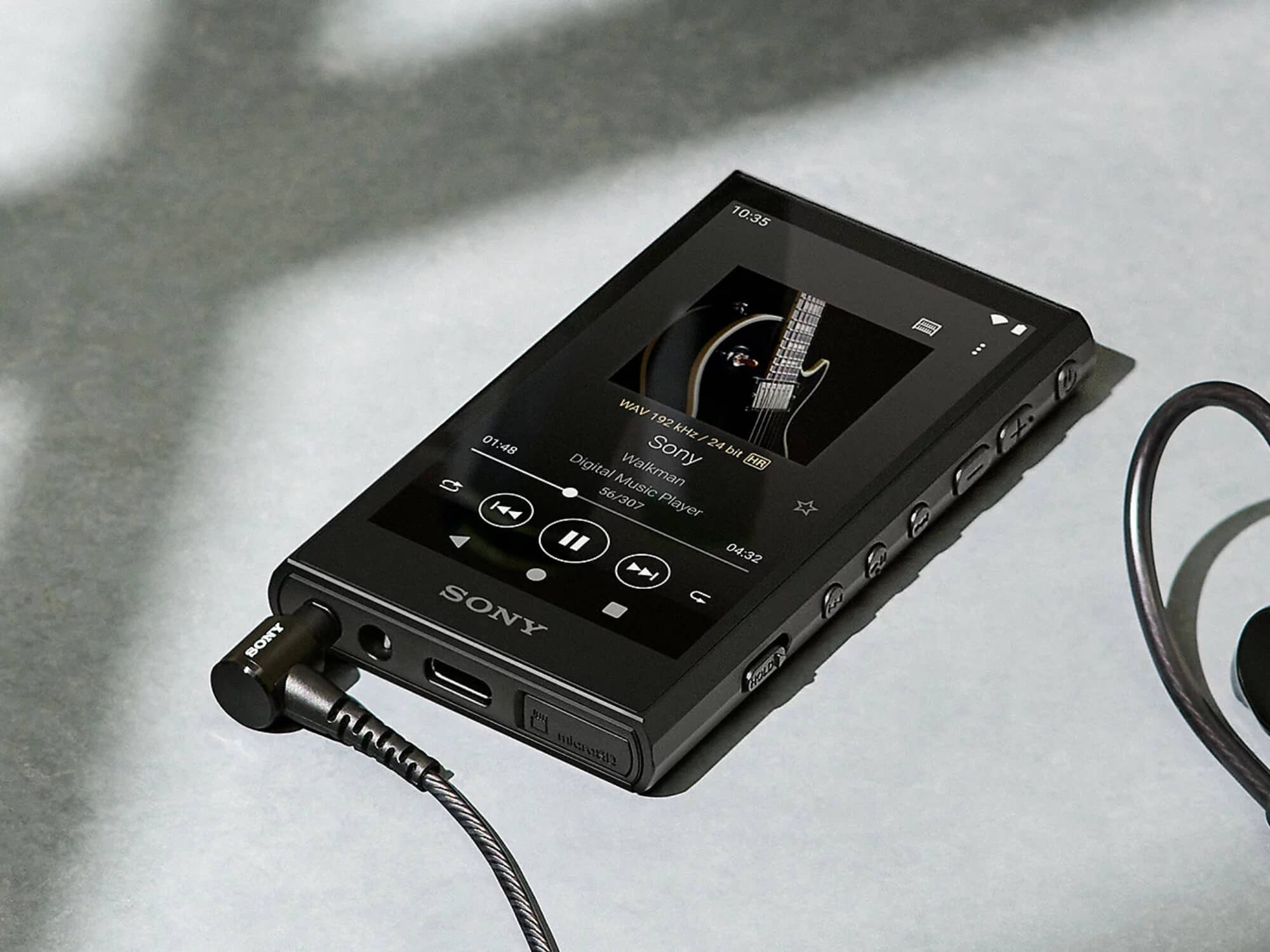Home>Production & Technology>Digital>What Is The Best Digital Music Format


Digital
What Is The Best Digital Music Format
Modified: March 10, 2024
Discover the best digital music format for your needs and preferences. Learn about the different options and find the perfect format for your digital music collection.
(Many of the links in this article redirect to a specific reviewed product. Your purchase of these products through affiliate links helps to generate commission for AudioLover.com, at no extra cost. Learn more)
Introduction
In today's digital age, music has become an integral part of our lives. With the evolution of technology, the way we consume and store music has undergone a significant transformation. One of the key aspects of this transformation is the emergence of various digital music formats. These formats play a crucial role in determining the quality, size, and compatibility of digital audio files. Understanding the differences between these formats is essential for music enthusiasts, audiophiles, and anyone who appreciates high-quality sound.
As technology continues to advance, the debate over the best digital music format remains a topic of interest and contention. Each format has its own set of advantages and limitations, catering to different preferences and requirements. Whether it's the widely popular MP3 format, the lossless quality of FLAC, the efficiency of AAC, or the uncompressed nature of WAV and AIFF, each format offers unique characteristics that appeal to diverse audiences.
In this comprehensive guide, we will delve into the intricacies of various digital music formats, shedding light on their distinct features, uses, and implications. By exploring the nuances of each format, we aim to provide valuable insights that will empower music enthusiasts to make informed decisions when it comes to choosing the best digital music format for their needs. Let's embark on this journey to unravel the mysteries of digital music formats and discover the optimal audio experience that aligns with individual preferences and priorities.
MP3 Format
MP3, short for MPEG-1 Audio Layer 3, is arguably the most widely recognized and utilized digital music format. Its popularity can be attributed to its efficient compression algorithm, which significantly reduces the file size without compromising the audio quality to a noticeable extent. This compression technique allows users to store a large number of songs on their devices without consuming excessive storage space, making MP3 an ideal choice for portable music players, smartphones, and other digital devices.
The MP3 format achieves compression by discarding certain audio frequencies that are deemed less perceptible to the human ear. This selective removal of frequencies enables the reduction of file sizes while retaining the essence of the music. As a result, MP3 files are relatively small in size, making them easily shareable and downloadable over the internet. This attribute played a pivotal role in the proliferation of digital music during the early days of online music sharing and distribution.
However, the compression process employed by MP3 does come with a trade-off. While the reduction in file size is advantageous for storage and transmission, it can lead to a loss of audio data, resulting in a perceptible degradation in sound quality, especially when compared to lossless formats. The extent of this quality loss is often influenced by the bit rate at which the MP3 file is encoded. Higher bit rates generally result in better sound quality but also lead to larger file sizes.
Despite the emergence of newer and more advanced digital music formats, MP3 continues to maintain its relevance due to its widespread compatibility with a diverse range of devices and software applications. This universal compatibility ensures that MP3 files can be played on various platforms, including music players, smartphones, computers, and car audio systems, making it a versatile and accessible format for music enthusiasts worldwide.
In summary, the MP3 format revolutionized the music industry by enabling the digital distribution of music on a massive scale. Its efficient compression technique, coupled with broad compatibility, has cemented its status as a staple in the realm of digital music. While the debate over its audio quality persists, the convenience and accessibility offered by MP3 continue to make it a popular choice for music enthusiasts, casual listeners, and professionals alike.
FLAC Format
FLAC, standing for Free Lossless Audio Codec, represents a significant milestone in the realm of digital music formats. Unlike the MP3 format, which employs lossy compression, FLAC is renowned for its ability to preserve the original audio quality without sacrificing fidelity. This distinction positions FLAC as a preferred choice for audiophiles, music enthusiasts, and professionals who prioritize uncompromised sound reproduction.
The hallmark feature of FLAC lies in its lossless compression algorithm, which enables the reduction of file sizes without compromising audio integrity. This means that when a song is encoded in the FLAC format, the resulting file is an exact replica of the original audio source, ensuring that no audio data is discarded during the compression process. As a result, FLAC files deliver pristine sound quality, capturing the nuances, dynamics, and subtleties of the music with remarkable accuracy.
The preservation of audio fidelity makes FLAC an ideal format for archiving and storing music collections, especially for individuals who place a premium on high-quality audio reproduction. Furthermore, FLAC's lossless nature ensures that it serves as a reliable archival format for music production, mastering, and distribution, as it retains the full spectrum of audio information without any degradation.
In addition to its emphasis on audio quality, FLAC offers versatility and compatibility across a wide range of devices and software platforms. Many modern music players, media software, and audio devices support FLAC playback, allowing users to enjoy their favorite music in its original, unaltered form. This compatibility extends to various operating systems, making FLAC a viable choice for both Windows and macOS users.
Despite its numerous advantages, it's important to note that FLAC files are larger in size compared to their lossy counterparts, such as MP3. This is a direct consequence of the lossless compression, which prioritizes audio fidelity over file size reduction. As a result, storing a sizable music library in FLAC format may necessitate a larger storage capacity, especially for individuals with extensive music collections.
In summary, the FLAC format stands as a testament to the pursuit of uncompromised audio quality in the digital domain. Its lossless compression, coupled with broad compatibility and archival capabilities, positions FLAC as an indispensable format for audiophiles, music professionals, and anyone who seeks an authentic and faithful representation of their favorite music.
AAC Format
Advanced Audio Coding (AAC) represents a significant advancement in the realm of digital audio formats, offering a compelling blend of efficiency, versatility, and high-quality sound reproduction. Developed as the successor to the MP3 format, AAC has garnered widespread adoption and acclaim for its ability to deliver superior audio performance while maintaining relatively smaller file sizes.
One of the key distinguishing features of AAC is its advanced compression algorithm, which achieves impressive data reduction without compromising the integrity of the audio. This efficient compression technique allows AAC files to occupy less storage space compared to their MP3 counterparts, making them an ideal choice for digital music enthusiasts who seek a balance between audio quality and file size.
AAC's compression method is based on a more sophisticated encoding scheme, enabling it to achieve better sound quality at lower bit rates compared to MP3. This means that AAC files can deliver a more refined and detailed audio experience, especially when encoded at similar or lower bit rates than MP3. As a result, AAC has become the format of choice for various digital audio applications, including online streaming, digital radio, and mobile music playback.
Furthermore, AAC's compatibility and support across a wide range of devices and platforms have contributed to its widespread adoption. Many modern smartphones, portable music players, and audio streaming services embrace AAC as a preferred format, ensuring that users can enjoy high-quality audio playback across different ecosystems. Additionally, the format's integration into popular media players and software applications further enhances its accessibility and usability.
In the realm of digital music production and distribution, AAC has emerged as a compelling option for content creators and distributors seeking to deliver high-fidelity audio while optimizing file sizes for efficient delivery. Its ability to strike a balance between audio quality and file size makes it an attractive choice for music streaming platforms, online stores, and digital content providers looking to offer a superior listening experience to their audience.
In summary, the AAC format stands as a testament to the evolution of digital audio technology, offering a compelling combination of efficient compression, high-quality sound reproduction, and broad compatibility. Its ability to deliver superior audio performance while maintaining manageable file sizes has solidified its position as a prominent player in the digital music landscape, catering to the diverse needs and preferences of music enthusiasts and industry professionals alike.
WAV Format
The WAV (Waveform Audio File Format) stands as a cornerstone in the realm of digital audio formats, renowned for its uncompressed nature and its pivotal role in preserving the original fidelity of audio recordings. Unlike compressed formats like MP3 and AAC, WAV files retain every detail and nuance of the original audio source, making them an ideal choice for professionals, audiophiles, and music enthusiasts who prioritize unaltered sound reproduction.
One of the defining characteristics of the WAV format is its uncompressed nature, which ensures that no audio data is discarded during the encoding process. This results in files that faithfully represent the original audio, capturing the full spectrum of frequencies, dynamics, and sonic intricacies. As a result, WAV files are often favored for critical listening, audio mastering, and professional music production, where maintaining the highest possible audio quality is paramount.
Furthermore, the uncompressed nature of WAV files makes them well-suited for archival purposes, as they serve as a reliable and accurate representation of the original audio recordings. This makes WAV an indispensable format for preserving audio content in its purest form, ensuring that no fidelity is lost over time. Additionally, the preservation of audio integrity makes WAV an ideal choice for audio restoration and remastering projects, where maintaining the authenticity of the original recordings is of utmost importance.
In the realm of music production and recording, WAV files play a crucial role in capturing and storing high-fidelity audio, serving as the preferred format for professional studios, recording engineers, and artists. The format's ability to capture the full breadth of sonic detail and dynamics makes it an essential tool for creating music with uncompromised audio quality, providing a canvas for artists and producers to express their creativity without limitations.
While WAV files excel in preserving audio fidelity, they are characterized by larger file sizes compared to compressed formats. This necessitates ample storage space, especially for individuals with extensive music libraries. Despite this consideration, the unparalleled audio quality and authenticity offered by WAV files make them an indispensable asset for anyone who values the true essence of sound.
In summary, the WAV format stands as a testament to the uncompromising pursuit of audio fidelity, serving as a foundational format for preserving, creating, and experiencing music in its purest form. Its uncompressed nature, coupled with its ability to faithfully capture the intricacies of sound, positions WAV as a timeless and indispensable format in the ever-evolving landscape of digital audio.
AIFF Format
The Audio Interchange File Format (AIFF) stands as a venerable and influential format in the realm of digital audio, renowned for its uncompressed and lossless nature. Developed by Apple Inc., AIFF has carved a significant niche in the world of professional audio, serving as a preferred format for high-fidelity music production, audio recording, and archival purposes.
One of the defining attributes of the AIFF format is its commitment to preserving audio fidelity without any loss of quality. AIFF files retain the full spectrum of audio data, capturing the nuances, dynamics, and sonic intricacies of the original recordings with utmost precision. This uncompromising approach to audio preservation makes AIFF an indispensable choice for professionals, musicians, and audio engineers who demand the highest standards of sound reproduction.
AIFF's uncompressed nature ensures that no audio data is discarded during the encoding process, resulting in files that faithfully represent the original audio source. This makes AIFF an ideal format for critical listening, audio mastering, and professional music production, where maintaining the highest possible audio quality is paramount. The format's ability to capture and retain the full breadth of sonic detail and dynamics provides a canvas for artists and producers to express their creativity without limitations.
Furthermore, AIFF files play a crucial role in archival and preservation efforts, serving as a reliable and accurate representation of the original audio recordings. This makes AIFF an indispensable format for preserving audio content in its purest form, ensuring that no fidelity is lost over time. Additionally, the preservation of audio integrity makes AIFF an ideal choice for audio restoration and remastering projects, where maintaining the authenticity of the original recordings is of utmost importance.
In the realm of digital music production and recording, AIFF files continue to be a cornerstone for capturing and storing high-fidelity audio. The format's unwavering commitment to audio fidelity, coupled with its broad support across professional audio software and hardware, solidifies its position as a timeless and indispensable asset for anyone who values the true essence of sound.
In summary, the AIFF format stands as a testament to the unwavering pursuit of audio fidelity, serving as a foundational format for preserving, creating, and experiencing music in its purest form. Its uncompressed and lossless nature, coupled with its ability to faithfully capture the intricacies of sound, positions AIFF as a timeless and indispensable format in the ever-evolving landscape of digital audio.
Conclusion
In conclusion, the realm of digital music formats encompasses a diverse array of options, each offering unique characteristics and catering to distinct preferences and requirements. From the widespread popularity of the MP3 format to the uncompromising fidelity of lossless formats like FLAC, WAV, and AIFF, the landscape of digital music presents a rich tapestry of choices for music enthusiasts, audiophiles, and industry professionals.
The MP3 format, with its efficient compression and broad compatibility, continues to serve as a ubiquitous presence in the digital music ecosystem, enabling convenient access to vast music libraries while maintaining a balance between file size and audio quality. Its role in revolutionizing the digital distribution of music cannot be understated, as it played a pivotal role in shaping the way we consume and share music in the digital era.
On the other end of the spectrum, lossless formats such as FLAC, WAV, and AIFF stand as beacons of uncompromised audio fidelity, appealing to those who seek an unaltered representation of their favorite music. These formats excel in critical listening, professional music production, and archival purposes, preserving the full spectrum of audio data with unparalleled precision and authenticity.
The emergence of advanced formats like AAC further exemplifies the evolution of digital audio technology, offering a compelling blend of efficiency, high-quality sound reproduction, and broad compatibility. AAC's ability to strike a balance between audio quality and file size reduction has positioned it as a prominent choice for online streaming, mobile playback, and digital content distribution.
As technology continues to advance, the debate over the best digital music format remains a dynamic and evolving discourse, shaped by the interplay of audio quality, file size, compatibility, and user preferences. Ultimately, the optimal choice of digital music format hinges on individual priorities, whether it's the convenience and accessibility of compressed formats or the unwavering pursuit of audio fidelity offered by lossless options.
In this ever-expanding landscape of digital music, one thing remains certain: the diversity of digital music formats ensures that there is a fitting option for every listener, creator, and industry professional, empowering them to curate, create, and experience music in a manner that resonates with their unique sensibilities and aspirations.











